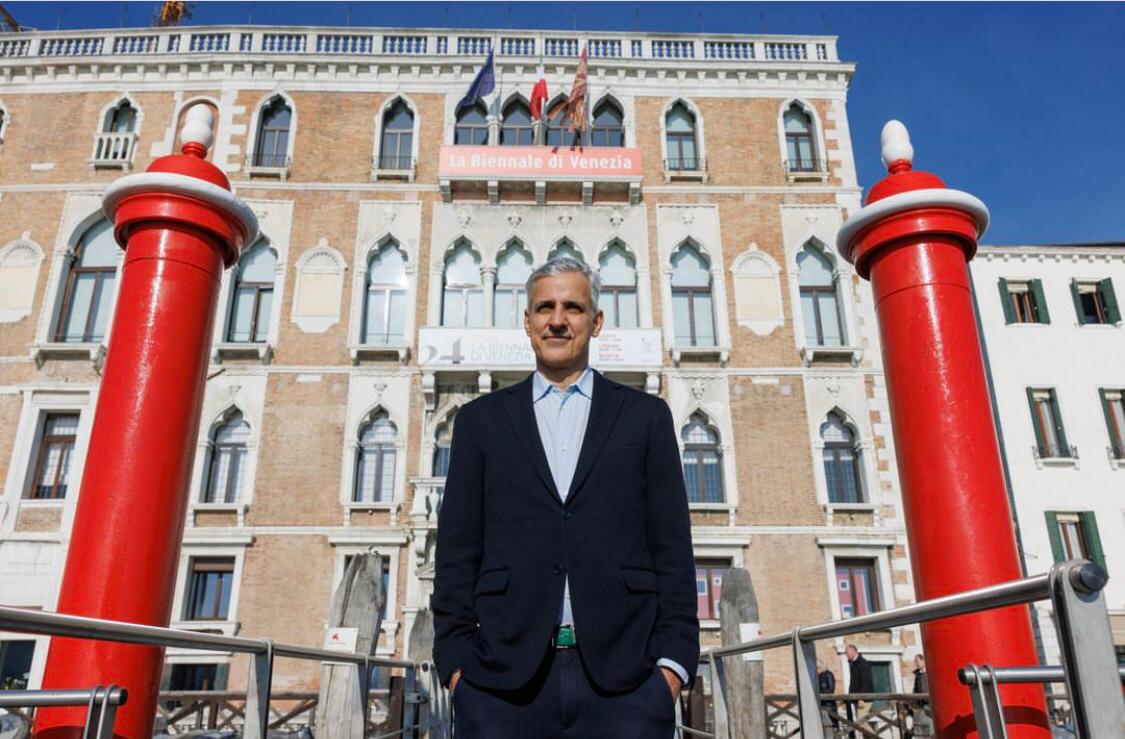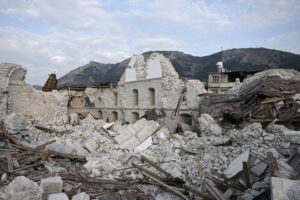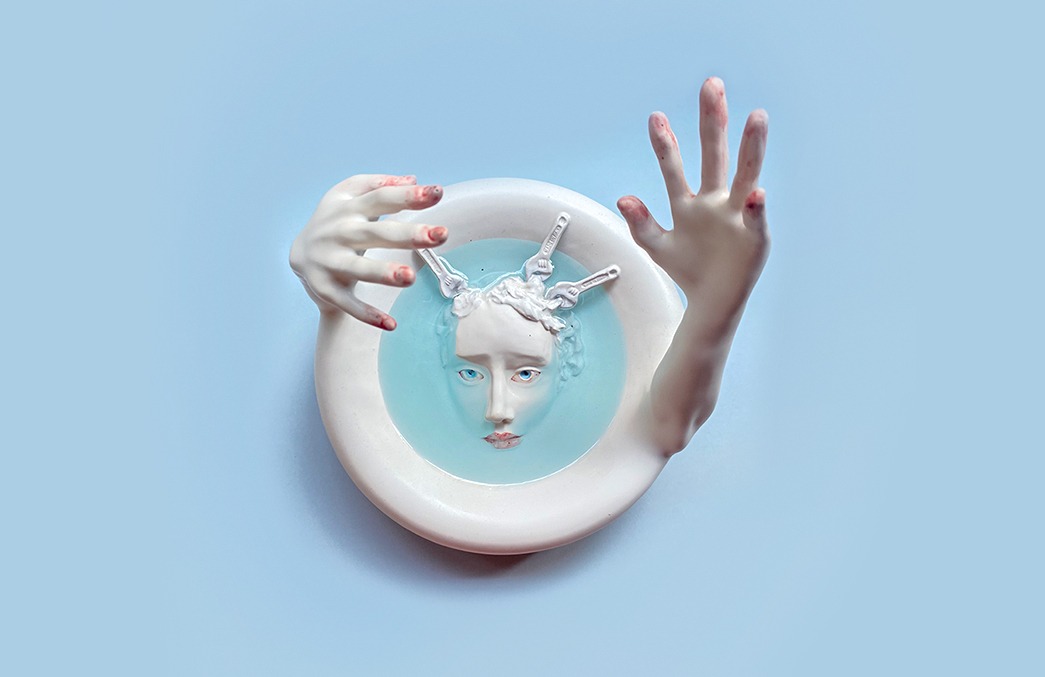Adriano Pedrosa, curator of this year’s 60th edition of the Venice Biennale, spoke about the biennial’s themes and the conceptual background of the biennial exhibition in a video call with Kate Brown from artnet.
The biennial, which is expected to present a thesis on the present and address contemporary issues every two years, is being curated by Pedrosa during this turbulent period, including the crisis in Palestine in recent months, and he says he has a “great responsibility” as the first Latin American and curator of the biennial.
The Brazilian curator does not shy away from responsibility and aims to offer different perspectives on the present from many perspectives. In the biennial exhibition “Foreigners Everywhere” (Stranieri Ovunque), Pedrosa focuses on exile, the marginalized, the refugee, the ignored and forgotten, and Focusing on queer, Indigenous, and outsider art, with a strong focus on the Global South.
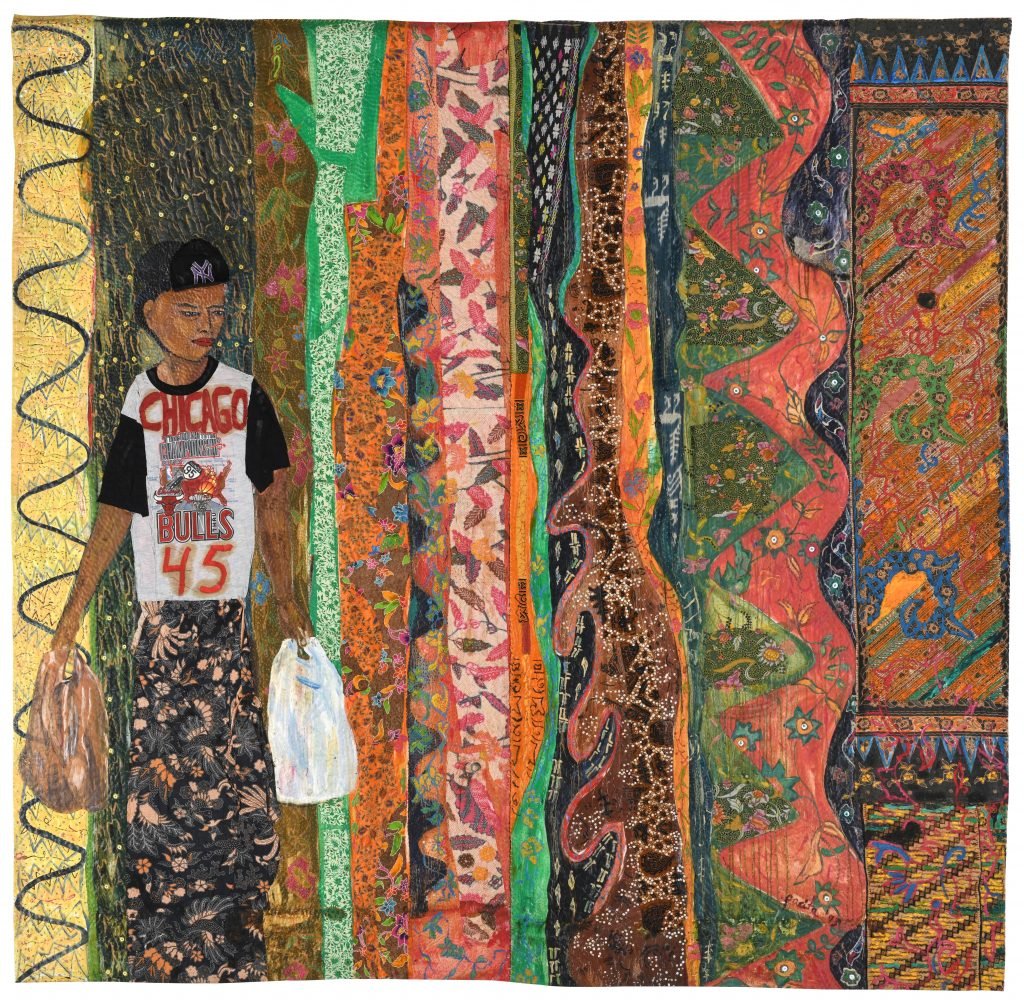
More than 330 Artists No Longer Living
In the exhibition, Pedrosa has included not only contemporary artists but also underappreciated, forgotten and obscure artists from the past, and many of the more than 330 artists and collectives are no longer alive. Thinking of the biennial strategically as a space for international visibility, Pedrosa states that since 20th century artists from the Global South had a harder time making a name for themselves in their own time than 21st century artists, he specifically included 20th century artists from the Global South in the biennial exhibition:
“I do understand that it’s much easier than it was for most of the 20th century for foreign artists from the global south to participate in a large scale international exhibition. You can’t organize a biennial or a large scale global art show without artists, say, from Mexico or Nigeria or India or Turkey, or Brazil or Argentina or South Africa for that matter. These artists are always present in these exhibitions, but that doesn’t happen so much with artists that were working in the 20th century. That’s why I thought it was interesting not only to develop the nucleo contemporaneo as I call it, which is focused in four subjects: the foreigner, the Indigenous, the queer, and the outsider, but also a nucleo storico that looks at modernisms in the Global South and artists working in the 20th century in the global south.”
Pedrosa says that although there are more artists in the exhibition than in 2022, the list is deceiving because in the exhibition, which is divided into two sections, “Nucleo Contemporaneo” for contemporary works and “Nucleo Storico” for historical works, there are more artists in the historical nucleus (nucleo storico) than in the contemporary nucleus (nucleo contemporaneo).
However, since each artist from the nucleo storico appears with a single work in only three sections, the exhibition will not be as voluminous as in the previous edition, despite the high number of artists.

Biennial Pays Debt to Avant-Garde Minds
Underlying Pedrosa’s emphasis on the historical core is his sense of duty to “repay his debt to these avant-garde minds” who should have been better known in their time. He is notable for bringing together the historical and the contemporary in his distinctive curatorial signature to open up new insights, connections and readings of both the past and the present.
Taking a similar approach to the ongoing exhibition “Histories” at the Museum of Art of São Paulo (MASAP), which he is directing for the Biennial, Pedrosa aims to blend contemporary art with history to create a new contemporaneity, which he describes as “an almost speculative curatorial exercise”:
“I think a biennial is mostly devoted to contemporary art, but I’m coming from a history in Sao Paulo where there were often historical segments and historical positions in the exhibition itself. These histories are quite relevant and very exciting. What I’m trying to do is almost a speculative curatorial exercise. It hasn’t really been done. It’s a draft, it’s an essay, it’s a provocation. It’s definitely not a definitive sort of encyclopedic presentation of a vast topic such as modernism in the Global South. I do feel that Venice does give us an opportunity to reinvent something and propose something quite ambitious because of the enormous energy that it gathers. There’s an exceptional kind of unique visibility, and this is what these artists really need.”

“This exhibition is a provocation”
“We do have this interest in a certain rewriting of art history. I don’t think I’m rewriting art history, but I am proposing to question more established narratives of art history.
This exhibition is a provocation; other people, institutions, or scholars might want to unfold this and take it elsewhere. I think this is very exciting and very contemporary.”
Where does the name “Strangers Everywhere” come from?
The biennial exhibition ” Foreigners Everywhere” takes its name from the series of works by the Palermo-based collective Claire Fontaine, formed in Paris in 2004. “Strangers Everywhere”, the name of a collective founded in Turin, Italy in the early 2000s to fight xenophobia and racism (Stranieri Ovunque), has been adopted by Claire Fontaine and used in neon installations in many different languages since 2004.
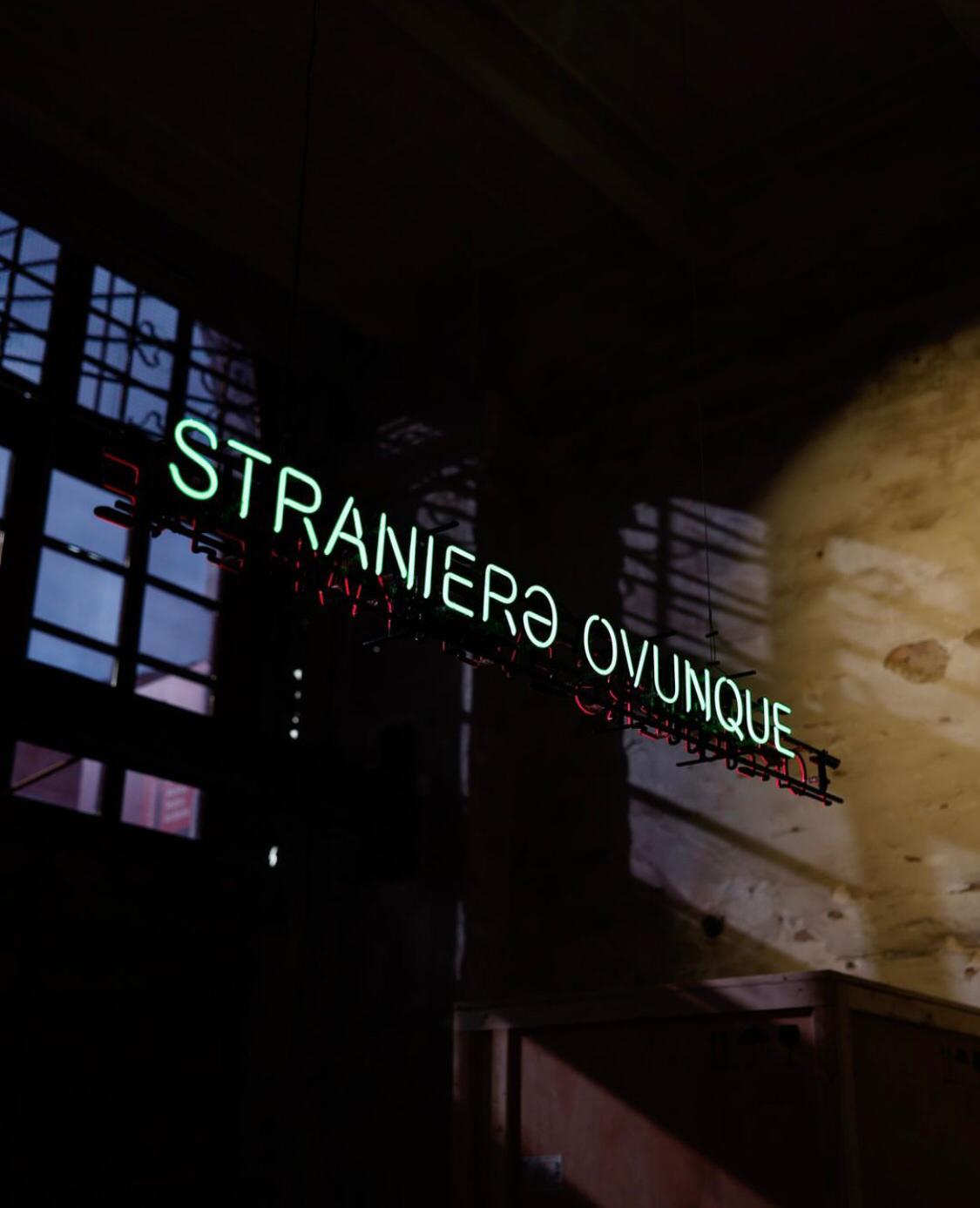
They will also be exhibited in a large-scale installation at the Venice Biennale. Curator Pedrosa explains his encounter with “Strangers Everywhere” and how he decided on the title of the exhibition:
“The expression itself has been in my mind for a long time. In 2009, I was invited to curate an exhibition at the Modern at Sao Paulo. I thought it was interesting to do something more provocative and speculative, and my proposition was that Brazilian contemporary art was not solely made by Brazilians. It could be art made by foreigners that had Brazilian references or content. It was very polemic project. I was accused of not including Brazilians. In that project, I had a small residency with maybe six or seven artists and Claire Fontaine was invited. There, they did two neon sculptures, one foreigners everywhere in Portuguese and a second sculpture was made in old Tupi, an extinct language Indigenous Brazilian language. The title became the subtitle of the exhibition. It was completely different exhibition—completely different in scale and approach—but with the same title.”
The Venice Biennale will take place between April 20 and November 24. Biennale program and ticket information can be found at labiennale.org.







